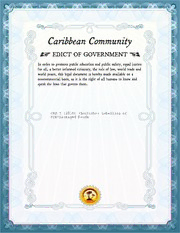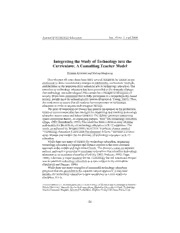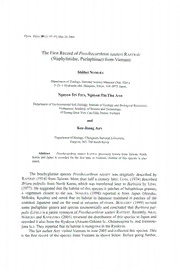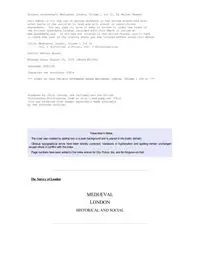
Medival LondonVolI by Sir Walter Besant PDF
Preview Medival LondonVolI by Sir Walter Besant
Project Gutenberg's Mediaeval London, Volume 1 (of 2), by Walter Besant This eBook is for the use of anyone anywhere in the United States and most other parts of the world at no cost and with almost no restrictions whatsoever. You may copy it, give it away or re-use it under the terms of the Project Gutenberg License included with this eBook or online at www.gutenberg.org. If you are not located in the United States, you'll have to check the laws of the country where you are located before using this ebook. Title: Mediaeval London, Volume 1 (of 2) Vol. 1 Historical & Social, Vol. 2 Ecclesiastical Author: Walter Besant Release Date: August 29, 2018 [EBook #57803] Language: English Character set encoding: UTF-8 *** START OF THIS PROJECT GUTENBERG EBOOK MEDIAEVAL LONDON, VOLUME 1 (OF 2) *** Produced by Chris Curnow, Les Galloway and the Online Distributed Proofreading Team at http://www.pgdp.net (This file was produced from images generously made available by The Internet Archive) Transcriber’s Notes The cover was created by adding text to a plain background and is placed in the public domain. Obvious typographical errors have been silently corrected. Variations in hyphenation and spelling remain unchanged except where in conflict with the index. Page numbers have been added to the index entries for City Police, the, and for Kingston-on-Hull. The Survey of London MEDIÆVAL LONDON HISTORICAL AND SOCIAL UNIFORM WITH THIS VOLUME PRICE 30/ NET EACH LONDON IN THE TIME OF THE TUDORS With 146 Illustrations and a Reproduction of Agas’ Map of London in 1560. “For the student, as well as for those desultory readers who are drawn by the rare fascination of London to peruse its pages, this book will have a value and a charm which are unsurpassed by any of its predecessors.”—Pall Mall Gazette. “A vivid and fascinating picture of London life in the sixteenth century—a novelist’s picture, full of life and movement, yet with the accurate detail of an antiquarian treatise.”—Contemporary Review. LONDON IN THE TIME OF THE STUARTS With 116 Illustrations and a Reproduction of Ogilby’s Map of London in 1677. “It is a mine in which the student, alike of topography and of manners and customs, may dig and dig again with the certainty of finding something new and interesting.”—The Times. “The pen of the ready writer here is fluent; the picture wants nothing in completeness. The records of the city and the kingdom have been ransacked for facts and documents, and they are marshalled with consummate skill.”—Pall Mall Gazette. LONDON IN THE EIGHTEENTH CENTURY With 104 Illustrations and a Reproduction of Rocque’s Map of London in 1741-5. “The book is engrossing, and its manner delightful.”—The Times. “Of facts and figures such as these this valuable book will be found full to overflowing, and it is calculated therefore to interest all kinds of readers, from the student to the dilettante, from the romancer in search of matter to the most voracious student of Tit-Bits.”—The Athenæum. EDWARD IV. AND HIS COURTIERS. From MS. in British Museum. Royal 15 E4. MEDIÆVAL LONDON VOL. I HISTORICAL & SOCIAL BY SIR WALTER BESANT LONDON ADAM & CHARLES BLACK 1906 CONTENTS PART I MEDIÆVAL SOVEREIGNS CHAP. PAGE 1. Henry II. 3 2. Richard I. 9 3. John 13 4. Henry III. 20 5. Edward I. 35 6. Edward II. 48 7. Edward III. 58 8. Richard II. 78 9. Henry IV. 92 10. Henry V. 103 11. Henry VI. 111 12. Edward IV. 138 13. Richard III. 152 PART II SOCIAL AND GENERAL 1. General View 159 2. Port and Trade of London 185 3. Trade and Gentility 216 4. The Streets 226 5. The Buildings 240 6. Furniture 255 7. Wealth and State of Nobles and Citizens 259 8. Manners and Customs 264 9. Food 294 10. Sport and Recreation 307 11. Literature and Science in London— § I. The Libraries of London 327 § II. London and Literature 330 § III. The Physician 336 12. Fire, Plague, and Famine 341 13. Crime and Punishment 349 14. Christian Names and Surnames 372 APPENDICES 379 INDEX 405 v vi ILLUSTRATIONS PAGE Edward IV. and his Courtiers Frontispiece Henry II. 3 Coronation of the “Young King” 5 Becket disputing with the King 7 Great Seal of Henry II. 8 First Seal of Richard I. 10 Cross of Knight Templar 12 King John 13 Henry Fitzailwyn, Knt., First Lord Mayor of London 14 King John hunting 16 A Portion of the Great Charter 17 Coronation of Henry III. 21 Jews’ Passover 27 A Pope in Consistory 29 Edward I. 35 Queen Eleanor of Castile 36 Charing Cross 41 Parliament of Edward I. Facing 44 Great Seal of Edward I. 46 Head of Edward II. 48 Shrine of King Edward II., Gloucester Cathedral 56 Edward III. 58 A Joust or Tournament of the Period 63 Sir Henry Picard entertaining the Kings of England, France, Scotland, Denmark and Cyprus Facing 70 John Wyclyf 76 Richard II. 78 King Richard II. and his Council go down the Thames in a Barge to confer with the Rebels 83 Wat Tyler for his Insolence is killed by Walworth, and King Richard puts himself at the Head of the Rebels 85 King Richard II. in Great Danger in the City of London 87 Henry of Lancaster brings King Richard back to London 90 How Richard II. resigned the Crown to the Duke of Lancaster Facing 90 Henry IV. 92 Funeral Procession of Richard II. Facing 94 “The True Portraiture of Richard Whittington, Thrice Lord Mayor of London” 98 The Porch of the Church of St. Alphage, London Wall, formerly the Chapel of the Priory of Elsinge Spital 99 Henry V. 103 Ships at La Rochelle 106 Marriage of Henry V. and Katherine of France 108 Henry VI. as an Infant 111 The Duke of Bedford 115 Henry VI. 119 Henry VI. at the Shrine of St. Edmund 123 White Hart Tavern, Bishopsgate Street 130 London Stone 131 Henry VI. and his Courtiers 133 Edward IV. 138 Ships of the Period 141 The Bastard of Falconbridge attacks London Bridge 143 “The Hierarchy of the Sciences,” as conceived by Mediæval Thought 149 Richard III. 152 North-East View of Crosby Hall 153 vii viii Interior of the Council Room, Crosby Hall 153 Sketch Map of London in the Fifteenth Century 159 The White Tower 160 St. Katherine’s by the Tower 161 Chaucer 163 The Old Fountain in the Minories, built about 1480, demolished 1793 175 North-West View of the Ancient Structure of Merchant-Taylors Hall, and the Alms-Houses adjoining, in Threadneedle Street 179 A South-East View of London before the Destruction of St. Paul’s Steeple by Fire, a.d. 1560 181 Temple Church, London 183 A Household Dining 203 The Steelyard, Thames Street 207 The Merchant 213 The Knight 219 Court of King’s Bench. Temp. Henry VI. 221 View of the Ruins of Part of the late Church of St. Leonard 229 View of the Crypt on the Site of the late College of St. Martin Le Grand 229 Arch of Blackfriars Priory, revealed by the Demolition of a Building in Ireland Yard, May 1900 238 Matthew Paris Dying 241 Embassy from the King of England to ask the Hand of the Lady Isabella of France in Marriage 243 Hall of the Knights of St. John 247 “The Ladies’ Bower” 249 Whittington’s House in Swithin’s Passage, Moor Lane 250 Builders at Work 252 Retinue of the Earl of Warwick 260 House Servant and Porter, Early Fourteenth Century 261 Earl Rivers presenting his Book to Edward IV. 262 Knights preparing for a Passage of Arms 265 Queen Isabella and her Ladies out Riding 269 Making Tapestry 271 Honi Soit qui mal y Pense Facing 274 Westminster Hall 276 Parting of St. Thomas and the Two Kings 277 Beggar Importuning Noble Lady 285 Banquet in London. Temp. Edward IV. Facing 296 A Banquet 301 A Hunting Party 311 Types of Chaucer’s Characters 313 A Banquet 315 King and Jester 316 Types of Chaucer’s Characters 317 Tournament of the Earl of Warwick 321 Coronation of Henry IV. Facing 322 English Knights Travelling 323 A Tournament in London 325 John Lydgate presenting his “Life of St. Edmund” to Henry VI. 328 Page from Pleshy Bible 331 Lydgate at Work 335 The Doctor of Physic 336 An Operation 337 Surgeon Operating on the Skull 337 An Alchemist’s Laboratory 338 The Couvre-feu 341 Prisoner being Sentenced and taken to Execution 349 ix The Tun, Cornhill 355 The Scold’s Bridle in Walton-on-Thames Church 356 A Beggar 363 A Hand-to-Hand Fight 367 PART I MEDIÆVAL SOVEREIGNS HENRY II. (1133-1189) From his effigy at Fontevrault. CHAPTER I HENRY II [In considering the reigning Kings in order, I have found it necessary to reserve for the chapters on the Mediæval Government of the City the Charters successively granted to the Citizens, and their meaning.] The accession of the young King, then only three-and-twenty years of age, brought to the City as well as to the Country, a welcome period of rest and peace and prosperity. These precious gifts were secured by the ceaseless watchfulness of the King, whose itinerary shows that he was a most unwearied traveller, with a determined purpose and a bulldog tenacity. From the outset he gave the whole nation, barons and burgesses, to understand that he meant to be King. To begin with, he ordered all aliens to depart. The land and the City were full of them; they were known by their gait as well as their speech; the good people of London looked about the streets, the day after the proclamation of exile, for these unwelcome guests, whose violence they had endured so long. They were gone “as though they had been phantoms,” Holinshed writes. During his long reign, 1154-1189, Henry, who seldom stayed in one place more than a few days, was in London or Westminster on twenty-seven occasions, but in many of them for a day or two only. These occasions were in March 1155; in April 1157; in March, July, and October 1163; in April and September 1164; in September and October 1165; in April and June 1170; in July 1174; in May, August, and October 1175; in March and May 1176; in March and April 1177; in July 1178; in August, November, and December 1186; in March 1185; in June 1186, and in June 1188. And all these visits together amounted to less than three months in thirty-five years. We may note that Henry held his first Christmas at Bermondsey, not at Westminster. One asks in vain what reason there was for holding the Court at a monastic house in the middle of a marsh, much more difficult of access than that of Westminster. It was here that it was decided that the Flemings, who had flocked over during the last reign, should leave the country. Among them was William of Ypres whom Stephen had made Earl of Kent. We hear very little of the King’s personal relations with the citizens, by whom he was respected as befits one of whom it is written that he was “pitiful to the poor, liberal to all men, that he took of his subjects but seldom times any great tributes, and, further, that he was careful above all things to have the laws duly executed and justice uprightly administered on all hands.” In the year 1170 Henry II. had his eldest son Henry crowned King; but the “Young King,” as he was called, never lived to occupy his father’s place; after a career of rebellion he died of a fever in 1183. Henry’s Charter gave the citizens privileges and liberties as large as those granted by Henry I.—with one or two important exceptions. The opening clause in the former Charter was as follows:— “Know ye that I have granted to my citizens of London to hold Middlesex to farm for three hundred pounds upon accompt to them and their heirs: so that the said citizens shall place as sheriff whomsoever they will of themselves: and as Justiciar whomsoever they will of themselves, for keeping of the pleas of the crown, and of the pleadings of the same, and none other shall be justice over the same men of London.” Except for a few years in the twelfth century the sheriffs were always elected by the Crown. In the reign of Stephen the citizens are said to have bought the right of electing their sheriffs. The omission of so important a clause indicates the policy of the King. It was his intention to bring the City under the direct supervision of the Crown. He therefore retained the appointment of the sheriff in his own hands; he calls him “my sheriff,” meus Vicecomes; and it was so kept by himself and his successor Richard the First. When John restored to the City the election of the sheriff, the post had lost much of its importance because the communal system of municipal government had been introduced under a mayor. Thanks mainly to the strong hand of the King, who enforced peace and order throughout the country, the prosperity of London greatly increased during his reign. As yet the City was governed by its aristocracy, the aldermen of the wards, which were at first manors or private estates. They endeavoured to rule the City as a baron ruled his people each in his own ward: there was, however, the Folk Mote to be reckoned with. The people understood what was meant by meeting and by open discussion: the right of combination was but a corollary. It is at this time that we first hear of the licences of guilds. We may take it as a sign of prosperity when men of the same craft begin to unite themselves into corporate bodies, and to form rules for the common interest. In the year 1180 it is recorded that a number of Guilds formed without licence were fined:— “The Gild whereof Gosceline was Alderman or President, thirty marks; Gilda Aurifabrorum, or Goldsmiths, Radulphus Flael, Alderman, forty-five marks; Gilda de Holiwell, Henry son of Godr. Alderman, twenty shillings; Gilda Bocheiorum, William la Feite, Alderman, one mark; Gilda de Ponte Thomas Cocus, Alderman, one mark; Gilda Piperariorum, Edward——, Alderman, sixteen marks; Gilda de Ponte, Alwin Fink, Alderman, fifteen marks; Gilda Panariorum, John Maurus, Alderman, one mark; Robert Rochefolet, his Gild, one mark; Richard Thedr. Feltrarius, Alderman, two marks; Gilda de Sancto Lazaro, Radulph de Barre, Alderman, twenty-five marks; Gilda de Ponte, Robert de Bosio, Alderman, ten marks; Gilda Peregrinorum, Warner le Turner, Alderman, forty shillings; Odo Vigil, Alderman, his Gild, one mark; Hugo Leo, Alderman, his Gild, one mark; and Gilda de Ponte, Peter, son of Alan, Alderman, fifteen marks.” (Maitland, vol. i. p. 53.) 3 4 5 CORONATION OF THE “YOUNG KING” From Vie de St. Thomas (a French MS., 1230-1260). If there were unlicensed guilds, there must have been licensed guilds. Unfortunately it is not known how many, or of what kind, these were. Among them, however, was the important and powerful Guild of Weavers, who were at that time to London what the “drapiers” were to Ypres in Flanders. (See p. 201.) It is sufficient to note the claim of the King to license every guild. As for the fining of the unlicensed guild, since the business of a guild is the regulation of trade, one would like to know how trade was regulated when there was no guild. But enough of this matter for the present. In this reign occurs an early instance of heresy obstinate unto death. The heretics came over from Germany. There were thirty of them, men and women. They called themselves Publicans; one of them, their leader, Gerard, had some learning: the rest were ignorant. They derided matrimony, the Sacraments of Baptism, the Lord’s Supper, and other articles. Being brought before the King, they were pressed with Scripture, “but stuck manfully to their faith and refused to be convinced.” It was therefore ordered that they should be burned with a hot iron on the forehead, and the leader on the chin as well, that they should be whipped, that they should be thrust out into the fields and that none should give them food, or fire, or lodging; which was done, the sufferers singing all the time, “Blessed are ye when men do hate you”—and so they went out into the open country, where they all died of cold and starvation. A pitiful story! Here is a strange story told by Stow. It is a good deal amplified from that given by Roger of Hoveden, but perhaps Stow obtained more material from other authorities also:— “A brother of the Earle Ferrers was in the night privily slayne at London, which when the King understoode, he sware that he would bee avenged on the Citizens: for it was then a common practice in the Citie, and an hundred or more in a company of young and old, would make nightly invasions upon the houses of the wealthie, to the intent to robbe them, and if they found any man stirring in the Citie within the night, they would presently murther him, in so much, that when night was come, no man durst adventure to walke in the Streetes. When this had continued long, it fortuned that a crewe of young and wealthy Cittizens assembling together in the night, assaulted a stone house of a certaine rich manne, and breaking through the wall, the good man of that house having prepared himselfe with other in a corner, when he perceived one of the Theeves named Andrew Bucquinte to leade the way, with a burning brand in the one hand and a pot of coales in the other, whiche he assayed to kindle with the brande, hee flew upon him, and smote off his right hande, and then with a lowde voyce cryed Theeves, at the hearing whereof the Theeves tooke their flight, all saving hee that had lost his hande, whom the good man in the next morning delivered to Richarde de Lucy the King’s Justice. This Theefe uppon warrant of his life, appeached his confederates, of whome many were taken, and many were fled, but among the rest that were apprehended, a certaine Citizen of great countenance, credite, and wealth, surnamed Iohn the olde,1 when he could not acquite himselfe by the Watardome, offered the King for his life five hundred Marks, but the King commanded that he shoulde be hanged, which was done, and the Citie became more quiet.” (Howe’s edition of Stow’s Chronicles, p. 153.) Here, then, is a case in which the ordeal by water was thought to prove a man’s guilt. In another place will be found described the method of the ordeal by water. What happened was, of course, that the unfortunate man’s arm was scalded. However, the City became quiet, which was some gain. In the year 1164 London Bridge was “new made of timber” by Peter of Colechurch, who afterwards built it of stone. In the year 1176 the stone bridge over the river was commenced. It was not completed until 1209, after the death of the architect. Henry I. had punished the moneyers for their base coin. Henry II. also had to punish them for the same offence, but he chose a method perhaps more effective. He fined them. BECKET DISPUTING WITH THE KING From MS. in British Museum—Claudius D2 (Cotton). The relations of Thomas à Becket with the King: their friendship and their quarrels and the tragic end of the Archbishop, belong to the history of the country. It does concern this book, however, that Thomas was by birth a Londoner. His father, Gilbert, whose family came from Caen, was a citizen of good position, chief magistrate, or portreeve, in the reign of Stephen. Gilbert Becket was remembered in the City not only by the history of his illustrious son, but by the fact that it was he who built the chapel in the Pardon Churchyard, on the north side of St. Paul’s, a place where many persons of honour were buried. It was ever the mediæval custom to make one place more sacred than another, so that if it was a blessed thing to be buried in a certain church, it was more blessed to lie in front of the altar. The old story about Gilbert’s wife being a Syrian is repeated by the historians, and is very possibly true. Holinshed says she was a “Saracen by religion,” which is certainly not true. Thomas Becket was born in wedlock; his father was certainly not married to a Mohammedan, and the birthplace of the future martyr was in a house on the site of the present Mercers’ Chapel, which itself stands on the site of the chapel of St. Thomas of Acon. Gilbert Becket died leaving behind him a considerable property in houses and lands. Whether the archbishop took 6 7 possession of this property as his father’s son, or whether he gave it to his sister, I do not know. Certain it is that after his death his sister Agnes, then married to Thomas Fitz Theobald de Heiley, gave the whole of the family estates to endow a Hospital dedicated to her brother Saint and Martyr. Nothing should be kept back: all—all must be given: one sees the intensity of affection, sorrow, pride, with which the new Saint was regarded by his family. There could be no worshipper at the altar of St. Thomas à Becket more devout than his own sister. (See also p. 278.) GREAT SEAL OF HENRY II. 8 CHAPTER II RICHARD I The coronation of King Richard on September 3, 1189, was disgraced by a massacre of the Jews—the first example of anti-Jewish feeling. Perhaps when they first came over these unfortunate people hoped that no traditional hatred of the race existed in England. Experience, alas! might have taught them, perhaps had taught them, that hatred grew up round the footsteps of the Infidel as quickly as the thistles in the field. When the Jew arrived in England what could he do? He could not trade because the merchants had their guilds; and every guild had its church, its saint, its priests, its holy days. He could not hold land because every acre had its own lord, and could only be transferred by an Act including a declaration of faith; he could not become a lawyer or a physician because the avenues to these professions lay also through the Church. Did a man wish to build a bridge, he must belong to the Holy Brotherhood of Bridge- Builders—Pontifices. Was an architect wanted, he was looked for in a Monastery. The scholars, the physicians, the artists were men of the cloister. Even the minstrels, gleemen, jugglers, tumblers, dancers, buffoons, and mimes, though the Church did not bless their calling, would have scorned to suffer a Jew among them. That was the position of the Jew. Every calling closed to him, every door shut. There was, however, one way open, but a way of contempt, a way accursed by the Church, a way held impossible to the Christian. He might practise usury. The lending of money for profit was absolutely forbidden by the Church. He who carried on this business was accounted as excommunicated. If he died while carrying it on, his goods were forfeited and fell to the Crown. In the matter of usury the Church had always been firm and consistent. The Church, through one or two of the Fathers, had even denounced trade. St. Augustine plainly said that in selling goods no addition was to be made to the price for which they were bought, a method which if carried out would destroy all trade except barter. So that while the usurer was accursed by the Church, to the King he became a large and very valuable asset. Every Jew who became rich, by his death enriched the King. It was calculated (see Joseph Jacobs, The Jews of Angevin England) that the Jews contributed every year one-twelfth of the King’s revenues. The interest charged by the usurer was in those days enormously high, forty per cent and even more: so that it is easy to understand how rich a Jew might become and how strong would be the temptation to squeeze him. FIRST SEAL OF RICHARD I. As for the hatred of the people for the Jews, I think that it had nothing whatever to do with their money-lending, for the simple reason that they had no dealings with them. The common people never borrowed money of the Jews, because they had no security to offer and no want of money except for their daily bread. Those who borrowed of the Jews were the Barons, who strengthened or repaired or rebuilt their castles; the Bishop, who wanted to carry on his cathedral or to build a church; the Abbot, who had works to execute upon the monastery estates, or a church to beautify. The great Lords of the Church and the Realm were the borrowers; and we do not find that they murdered the Jews. The popular hatred was purely religious. The Jew was an unbeliever: when no one was looking at him he spat upon the Cross; when he dared he kidnapped children and crucified them; he it was who crucified our Lord, and would do so again if he could. Why, the King was going off to the East to kill infidels, and here were infidels at home. Why not begin by killing them first? So the people reasoned, quite logically, on these premisses. To return to the coronation of Richard I. For fear of magic it was ordered that no Jew and no woman should be allowed admission to the Abbey Church during the function. Unfortunately, the Jews, hoping to conciliate the new Sovereign with gifts, assembled outside the gates and endeavoured to gain admission. It was always characteristic of the Jews, especially in times of persecution, that they never in the least understood the intensity of hatred with which they were regarded by the world. One would think that on such an occasion common prudence would have kept them at home. Not so, they endeavoured to force their way into the Hall during the Coronation Banquet, but they were roughly driven back, and the rumour ran that the King had ordered them to be put to death; so they were cudgelled, stoned, struck with knives, chased to their houses, which were then set on fire. From mid-day till two of the clock on the following day the mob continued to murder, to pillage, and to destroy. It is noted that at Richard’s Coronation Banquet the Chief Magistrate of London, not yet Mayor, officiated as Butler, an office claimed in the following reigns from that precedent. When Richard prepared for his Crusade he ordered the City to furnish a certain quantity of armour, spears, knives, tents, etc., for the use of his army, together with wine, silken habits, and other things for his own use. On the departure of Richard for Palestine his Chancellor, William Longchamp, Bishop of Ely, took up his residence in the Tower. Power turned his head; he acted like one whose position is safe, and authority unbounded. He annoyed the citizens by constructing a moat round the Tower, and by including within the external wall of the Tower a piece of land here and another there, a mill which belonged to St. Katherine’s Hospital, and a garden belonging to the City. He offended the Bishops by seizing his brother Regent, Bishop Pudsey; and the Barons by insulting Geoffrey, Archbishop of York, the son of Fair Rosamond. Thereafter, when John, at the head of a large army, summoned him to justify himself at Reading, Longchamp closed the gates of the Tower. John proceeded to ascertain the disposition of the leading citizens of London. On the one hand Longchamp was the representative of the King, appointed by the King, to whom obedience was due. On the other hand, he had 9 10 11 CROSS OF KNIGHT TEMPLAR exasperated the citizens beyond endurance. They were ready—but with exceptions—to transfer their allegiance to John —always as the King’s representative. And here they saw their opportunity for making terms with John to their own advantage. Why not ask for the Commune? They did so. They made the granting of the Commune the condition of John’s admission into the City, and therefore of Longchamp’s disgrace. Should John refuse they would close their gates and support the Chancellor. But John accepted. He rode from Reading into London accompanied by the Archbishop of Rouen and a great number of Bishops, Earls, and Barons. He was met by the citizens. The gates were thrown open; and John’s army sat down to besiege the Tower from the City and from the outside. This done, he called a council in the Chapel House of St. Paul’s and there solemnly conceded the Commune, upon which the citizens took oath of obedience to him, subject to the rights of the King. The meaning of this concession will be found more fully considered later on. At present it is sufficient to observe that it was followed by the election of the first Mayor of London: that other towns hastened to get the same recognition: and that the Commune, though never formally withdrawn by Richard himself, was never allowed by him. Two Charters were granted to the City by Richard. The first, dated April 23, 1194, was an exact copy of his father’s Charter, with the same omission as to the election of Sheriff and Justiciar. It is not addressed to the Mayor, because Richard never recognised that office, but, as the Charter of Henry II. and that of Henry I., “To the Archbishops, Bishops, Abbots, Earls, Barons, Justices, Sheriffs, Ministers, and all others his faithful Friends and English people.” The second Charter of July 14, 1197, authorised the removal of all weirs in the River: “For it is manifest to us ... that great determent and discommodity have grown to our City of London and also to the whole realm by reason of the said wears.” We now arrive at the first intimation of an articulate discontent among the people. In all times those “who have not” regard those “who have” with envy and disfavour; from time to time, generally when the conditions of society seem to make partition possible, this hatred shows itself openly. In the year 1195, there first arose among the people a leader who became the voice of their discontent: he flourished for a while upon their favour; in the end he met with the usual fate of those who rely upon the gratitude and the support of the people. (See vol. ii. pt. i. ch. vi.) In the year 1198 the Sheriffs of London and Middlesex were ordered by the King to provide standards of weight, length, and measures to be sent into all the Counties. Richard was received by the City, on his return from captivity, with the greatest show of rejoicing; the houses being so decorated as to move the astonishment of the “Lords of Almaine” who rode with the King. “When they saw the great riches,” Holinshed writes, “which the Londoners shewed in that triumphant receiuing of their souereigne lord and king, they maruelled greatlie thereat, insomuch that one of them said unto him:‘Surelie, oh King, your people are wise and subtile, which doo nothing doubt to shew the beautiful shine of their riches now that they have receiued you home, whereas before they seemed to bewaile their need and povertie, whilest you remained in captiuitie. For verelie if the emperor had understood that the riches of the realme had bin such, neither would he have beene persuaded that England could have been made bare of wealth, neither yet should you so lightlie have escaped his hands without the paiment of a more huge and intollerable ransome.’” (Vol. iii. p. 142, 1586 edition.) The whole period of Richard’s residence in London, or, indeed, in England, was limited to a few weeks after his coronation and a few weeks after his return from captivity. 12 KING JOHN (1167(?)-1216) From the effigy in Worcester Cathedral. CHAPTER III JOHN John granted five Charters to the City. By the first of these Charters, June 17, 1199, he confirmed the City in the liberties which they had enjoyed under King Henry II. By the third Charter, July 5, 1199, he went farther: he gave back to the citizens the rights they had obtained from Henry I., viz. the farm of Middlesex for a payment of £300 sterling every year, and the right of electing their own sheriffs. This seemed a great concession, but was not in reality very great, for the existence of a Mayor somewhat lessened the importance of the Sheriffs. The second Charter confirmed previous laws as to the conservation of the Thames and its Fisheries. The fourth Charter, March 20, 1202, disfranchised the Weavers’ Guild. The fifth Charter, May 9, 1215, granted the right of the City to appoint a Mayor. Now there had been already a Mayor for many years, but he had not been formally recognised by the King, and this Charter recognised his existence. The right involved the establishment of the Commune, that is to say, the association of all the burghers alike for the purpose of protecting their common interests. It was no longer, for instance, the Merchant Guild which regulated trade as a whole; nor an association of Trade Guilds: nor was it an association of City Barons: nor was it a tribunal of Justice: it was simply the association of the burghers as a body. We are now, however, approaching that period of the City History in which was carried on the long struggle between the aristocratic party and the crafts for power. In this place it is only necessary to indicate the beginning of the strife. The parties were first the Barons and Aldermen, owners of the City manors; secondly, the merchants, some of whom belonged to the City aristocracy; and, lastly, the craft. The Chief Magistrate of the Commune held a position of great power and importance. It was necessary for the various parties to endeavour to secure this post for a man of their own side. HENRY FITZAILWYN, KNT., FIRST LORD MAYOR OF LONDON From an old print. The disfranchisement of the weavers certainly marks a point of importance in this conflict. It shows that the aristocratic party was for the time victorious. The Weavers’ Guild, as we have seen, had become very powerful. Their Guild united in itself all the tradesmen belonging to the manufacture, or the use, of textile fabrics; such as weavers, clothmakers, shearmen, fullers, cloth merchants, tailors, drapers, linen armourers, hosiers, and others, forming a body powerful by numbers, wealth, and organisation. To break up this body was equivalent to destroying the power of the crafts for a long time. The domestic incidents of the City during this reign are not of great importance. A very curious story occurs in the year 1209. The King’s Purveyor bought in the City a certain quantity of corn. The two Sheriffs, Roger Winchester and Edmund Hardell, refused to allow him to carry it off. King John, who was never remarkable for meekness, flew into a royal rage on this being reported to him, and ordered the Council of the City to degrade and imprison the said Sheriffs—which was done. But the Council sent a deputation to the King, then staying at Langley, to intercede for the Sheriffs. Their conduct, it was explained, was forced upon them. Had they not stopped the carrying off of the corn there would have been an insurrection which might have proved dangerous. This makes us wonder if the Commonalty resented the sending of corn out of the City? If so, why? Or was there some other reason for preventing it? After the King’s return from his Irish expedition the Parliament or Council held at St Bride’s, Fleet Street, took place. John wanted money. He insisted on taking it, not from the City but from the Religious Houses. It was an act worthy of an Angevin. The fact, and the way of achieving the fact, are thus narrated by Holinshed:— “From hence he made hast to London, and at his comming thither, tooke counsell how to recover the great charges and expenses that he had beene at in this journey and by the advice of William Brewer, Robert de Turnham, Reignold de Cornhill, and Richard de Marish, he caused all the cheefe prelats of England to assemble before him at St. Bride’s in London. So that thither came all the Abbats, Abbesses, Templars, Hospitallers, keepers of farmes and possessions of the order of Clugnie, and other such forreners as had lands within this realme belonging to their houses. All which were constreined to paie such a greevous tax, that the whole amounted to the summe of an hundred thousand pounds. The moonks of the Cisteaux order, otherwise called White Moonks, were constreined to paie 40 thousand pounds of silver at this time, all their privileges to the contrarie notwithstanding. Moreover, the abbats of that order might not get licence to go their generall chapter that yeere, which yeerelie was used to be holden, least their complaint should moove all the world against the king, for his too too hard and severe handling of 13 14 15
The list of books you might like

Rich Dad Poor Dad

The Silent Patient

Haunting Adeline

Credence

Parent-Infant Psychodynamics: Wild things, Mirrors and Ghosts
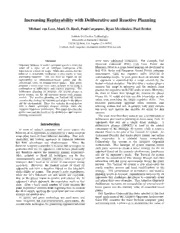
DTIC ADA459203: Increasing Replayability with Deliberative and Reactive Planning
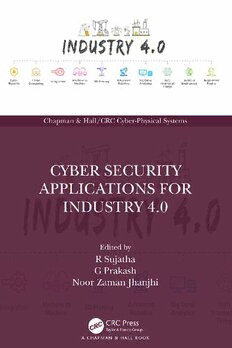
Cyber Security Applications for Industry 4.0
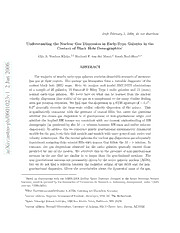
Understanding the Nuclear Gas Dispersion in Early-Type Galaxies in the Context of Black Hole Demographics

iOS 10 Swift Programming Cookbook
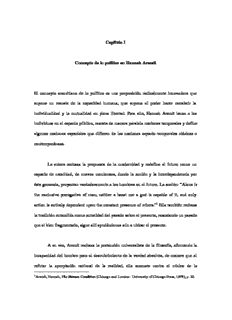
Capítulo 1. Concepto de lo político en Hannah-Arendt

ERIC EJ1066699: Marla Rules
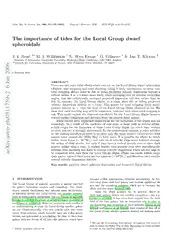
The importance of tides for the Local Group dwarf spheroidals
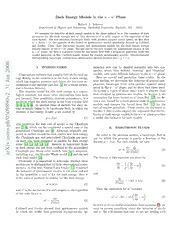
Dark Energy Models in the w - w' Plane
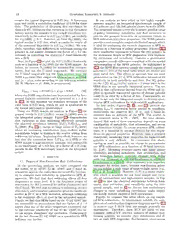
Optical Star-Formation Rate Indicators

Это было навсегда. 1968-1985.
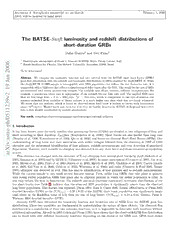
The BATSE-Swift luminosity and redshift distributions of short-duration GRBs
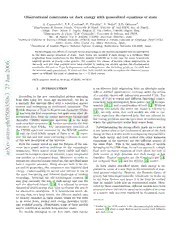
Observational constraints on dark energy with generalized equations of state
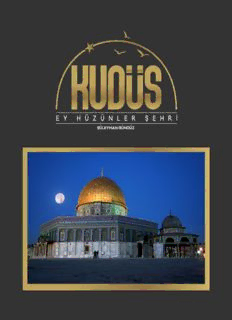
süleyman gündüz
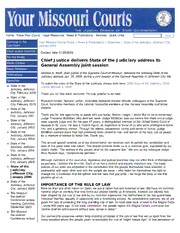
State of the Judiciary Address 2006
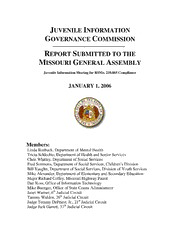
Juvenile Information Governance Commission Report Submitted to the Missouri General Assembly 2005
